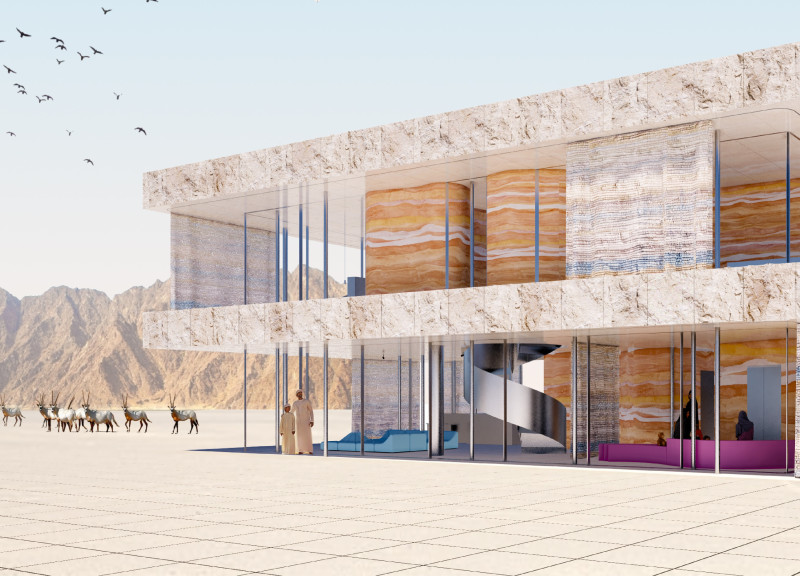5 key facts about this project
The architectural design is grounded in the concept of connectivity, both with the environment and among the community members who will inhabit it. This is reflected in the fluidity of the spaces, which encourage interaction and collaboration. Open floor plans allow for flexible use, while strategically placed windows frame views of the exterior landscape, ensuring that natural light permeates the interior. This connection with the outside serves not only to enhance the aesthetic environment but also to promote a sense of wellbeing among visitors.
Materials play a crucial role in the project’s identity. The use of sustainably sourced wood throughout the structure provides warmth and texture, creating a welcoming atmosphere. In contrast, the incorporation of sleek glass facades reflects contemporary design trends while offering transparency that fosters a sense of openness. The careful selection of materials also contributes to energy efficiency, aligning with modern architectural practices aimed at reducing the carbon footprint.
The design includes thoughtful details such as green roofs and living walls that integrate nature into the urban setting. These features not only improve air quality but also create a visually appealing environment that is in tune with ecological principles. A series of outdoor gathering spaces, including terraces and landscaped areas, extends the functionality of the community center into the surrounding environment, providing opportunities for outdoor events and activities.
Another noteworthy aspect of the design is its adaptability. Spaces within the community center can be reconfigured to suit various functions, making it an ideal venue for diverse community events. This flexibility underscores the commitment to creating a space that serves the evolving needs of the community.
Unique design approaches are evident in the integration of local cultural elements into the architecture. By incorporating motifs and stylistic influences reflective of the area’s heritage, the project establishes a dialogue with its context. This thoughtful consideration of local identity enhances the building's significance and fosters a sense of pride among community members.
As a synthesis of architectural innovation and community engagement, this project stands as a testament to the potential of architecture to cultivate relationships among its users and their environment. The design’s emphasis on connectivity, sustainability, and cultural relevance positions it as a model for future architectural projects in urban settings.
For those interested in delving deeper into this architectural endeavor, exploring the project presentation will provide further insights into its architectural plans, sections, designs, and underlying ideas. This exploration offers an opportunity to appreciate the careful detailing and thoughtfulness embedded in the project, showcasing how design can meaningfully navigate both functionality and community impact.


























